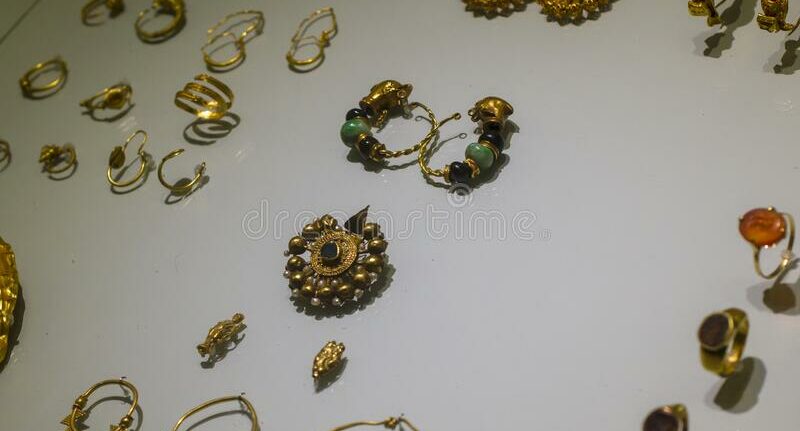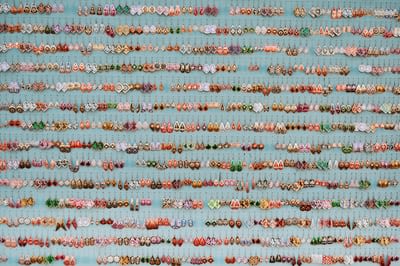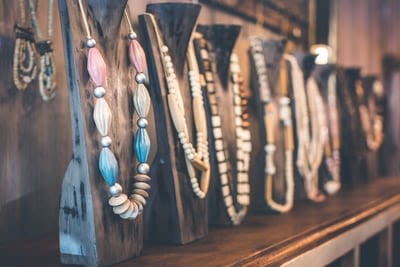History and Evolution of Jewellery Design: From Ancient Times to Modern Day

Exploring the Fascinating History and Evolution of Jewellery Design

The Origins of Jewellery Design: Ancient Civilizations and Techniques
Since the inception of human history, jewellery has been a symbol of visual communication. The pictorial iconography of painting, sculpture, mosaic offer plentiful testimony to the jewellery worn in various eras by the humans and their associates. By the oldest civilization on the earth burying the dead with their richest precious garments and ornaments is another important evidence of jewellery and jewels magnitude in human history.
Since prehistoric times, before precious metals were discovered, humans use a great variety of shells, animal-fish bones and teeth, coloured pebbles, animal skins, animal horns and bird feathers for enough self-decoration as jewellery.
The settlement of the human race along the banks of great rivers and lakes facilitated the development of agriculture and animal husbandry. This human settlement led to the building of human civilizations that also led to the unearthing of alluvial deposits of minerals. The first among metals were gold metal and precious stones. This led to the development of ornaments for almost every part of the human body. For the head, there were crowns, tiaras, hairpins, combs, earrings, nose rings, lip rings, and earplugs. For the neck and torso, there were necklaces, fibulae (the ancient safety pin), brooches, pectorals (breastplates), stomachers, belts, and watch fobs. For the arms and hands armlets, bracelets, and rings were fashioned. For the thighs, legs, and feet craftsmen designed thigh bracelets, toe rings, ankle bracelets, and shoe buckles.
After research, the most ancient evidence of jewellery is found in Sumerian Queen Pu-abi’s tomb at Tall al-Muqayyar, dating from the 3rd millennium BCE. In the crypt, the queen’s body was enclosed with a sort of robe made of gold, silver, lapis lazuli, carnelian, agate, and chalcedony beads. The processes like welding, alloys, filigree, stonecutting, and even enamelling were developed during the Sumerian times. Animals, leaf, geometry disks, circles, cylinders, spheres were the source of inspiration for jewellery design and making.
Jewellery Design During the Renaissance and Baroque Periods
The discovery of the tomb of the Egyptian pharaoh Tutankhamun, 18th dynasty, 1539–1292 BCE, exposed the biggest collection of gold and jewellery in the world in the pharaoh’s innermost coffin. It contained bracelets, earrings, necklaces, amulets, pendants, and rings are of outstanding quality and a high degree of sophisticated refined jewellery design. Egyptian jewellery chiefly made of beads, on the rhythmic repetition of colours and shapes of a lotus flower, Isis knot, Horus eye, falcon, serpent, vulture, and sphinx are all designs symbolize religious beliefs and cults.
The Bronze Age civilization that prospered at Crete on the Mediterranean island had the gold working were granulation, filigree, cutting and stamping of a gold sheet into beads to form necklaces and diadems, as well as to decorate clothing.
The Indian subcontinent gives archaeological evidence of rings, bracelets, and other types of jewellery. The Indus civilization demonstrates the indication of jewellery like a necklace with three pendants, armlets, bangle bracelets, hair ornaments, earrings, necklaces with round and cylindrical beads, chains, belts, and arm rings. Stonecutting and polishing of precious and semi-precious stone are existing since the 4th–5th century CE, proof provided by Buddhist statues. Later rich Hindu Rajas and Mughals adorned themselves greatly with the jewels. A very early type of Hindu amulet known as ‘Nauratan’ made up of a gold plaque with nine precious stones fastened above it. A series of ‘nauratan’ could be used to form a necklace or belt. A wide variety of forms were used for jewellery making by pearls, filigree, gems, and coral appeared in floral compositions with contrasting colours having Lotus leaves design.
In the early twentieth century, the producer of synthetic gemstones grew rapidly. They were providing traditional jewellery design at more reasonable prices for a bigger market.
Check out Jewellery designing courses at JD institute







